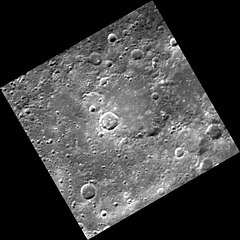
Victor-Marie Hugo, sometimes nicknamed the Ocean Man, was a French Romantic writer and politician. During a literary career that spanned more than sixty years, he wrote in a variety of genres and forms.

The Chicxulub crater is an impact crater buried underneath the Yucatán Peninsula in Mexico. Its center is offshore, but the crater is named after the onshore community of Chicxulub Pueblo. It was formed slightly over 66 million years ago when a large asteroid, about ten kilometers in diameter, struck Earth. The crater is estimated to be 180 kilometers in diameter and 20 kilometers in depth. It is the second largest confirmed impact structure on Earth, and the only one whose peak ring is intact and directly accessible for scientific research.
Hugo or HUGO may refer to:

Léon Philippe Teisserenc de Bort was a French meteorologist and a pioneer in the field of aerology. Together with Richard Assmann (1845-1918), he is credited as co-discoverer of the stratosphere, as both men announced their discovery during the same time period in 1902. Teisserenc de Bort pioneered the use of unmanned instrumented balloons and was the first to identify the region in the atmosphere around 8-17 kilometers of height where the lapse rate reaches zero, known today as the tropopause.

Hawaiʻi Volcanoes National Park is an American national park located in the U.S. state of Hawaii on the island of Hawaii. The park encompasses two active volcanoes: Kīlauea, one of the world's most active volcanoes, and Mauna Loa, the world's largest shield volcano. The park provides scientists with insight into the development of the Hawaiian Islands and access for studies of volcanism. For visitors, the park offers dramatic volcanic landscapes, glimpses of rare flora and fauna, and a view into the traditional Hawaiian culture connected to these landscapes.

Haleakalā National Park is an American national park located on the island of Maui in the state of Hawaii. Named after Haleakalā, a dormant volcano within its boundaries, the park covers an area of 33,265 acres, of which 24,719 acres is a wilderness area. The land was designated a national park in 1976 and its boundaries expanded in 2005.

The far side of the Moon is the lunar hemisphere that always faces away from Earth, opposite to the near side, because of synchronous rotation in the Moon's orbit. Compared to the near side, the far side's terrain is rugged, with a multitude of impact craters and relatively few flat and dark lunar maria ("seas"), giving it an appearance closer to other barren places in the Solar System such as Mercury and Callisto. It has one of the largest craters in the Solar System, the South Pole–Aitken basin. The hemisphere has sometimes been called the "dark side of the Moon", where "dark" means "unknown" instead of "lacking sunlight" – each side of the Moon experiences two weeks of sunlight while the opposite side experiences two weeks of night.

Johan August Hugo Gyldén was a Finland-Swedish astronomer primarily known for work in celestial mechanics.

Gyldén is the remnant of a lunar impact crater that is located to the northeast of the walled plain Ptolemaeus on the Moon. Its diameter is 48 km. It is named after the Finland-Swedish astronomer Hugo Gyldén. It lies along the prime meridian of the selenographic coordinate system, and less than 150 km south of the lunar equator. Nearby craters of note include Herschel to the west, the flooded Réaumur to the north, and Hipparchus to the east.

Lunar craters are impact craters on Earth's Moon. The Moon's surface has many craters, all of which were formed by impacts. The International Astronomical Union currently recognizes 9,137 craters, of which 1,675 have been dated.

The 10th World Science Fiction Convention, or the tenth instance of Worldcon, was held on the Labor Day weekend, 30 August – 1 September 1952, at the Morrison Hotel in Chicago, and was chaired by Julian May.

Octavia E. Butler Landing is the February 18, 2021, landing site of the Mars 2020 Perseverance rover within Jezero crater on planet Mars. On March 5, 2021, NASA named the site for the renowned American science fiction author, Octavia E. Butler, who died on February 24, 2006. The Mars landing took place nearly 15 years to the day after her death. The coordinates of the landing site on Mars are 18.44°N 77.45°E












